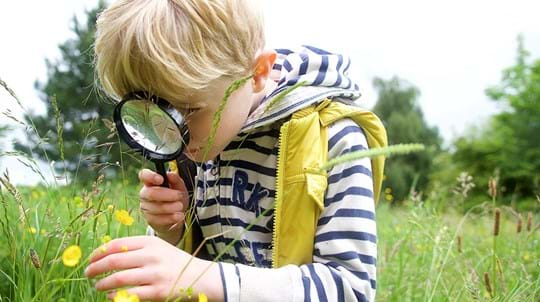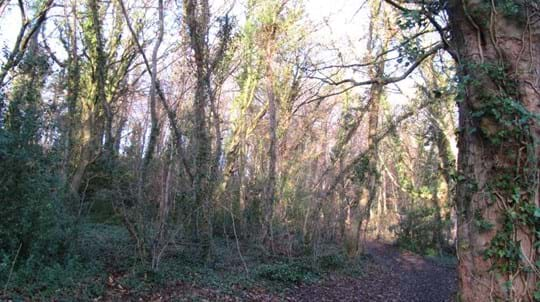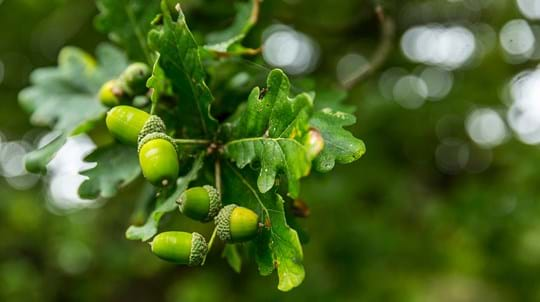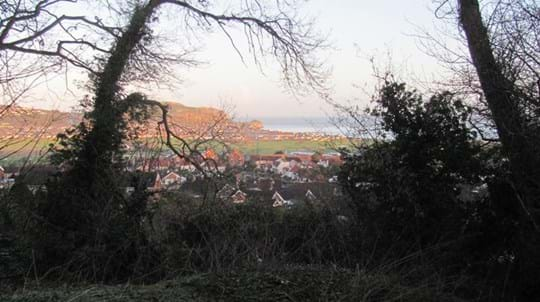
Marl Hall Woods
Llandudno Junction

Woodland Trust wood
11.96 ha (29.55 acres)
SH799788
Explorer 17
OS Landranger 115
Marl Hall Woods is a delightful, ancient semi-natural woodland with stunning displays of rare and beautiful wildflowers in the spring and summer and dazzling colour in the autumn. The site’s prominent location provides great views across the Conwy Valley and a range of historical features make it a particularly interesting place for a woodland walk or picnic.
Features
- Parking at site
- Public access
- Spring flowers
- Waymarked walk
- Grassland
- Broadleaved woodland
How to get to Marl Hall Woods
Marl Hall Woods is a 12-hectare (29.6-acre) woodland on the edge of Llandudno Junction on the eastern side of the Conwy estuary, opposite the medieval town of Conwy.
The wood is a prominent feature in the landscape, overlooking Llandudno Junction and the nearby North Wales Expressway.
Exit the A55 North Wales expressway at junction 19 and take the A470 northwards towards Llandudno. Follow for just over 1.5km (0.9 miles) and on reaching the next roundabout, turn right into Narrow Lane. Continue for 100 metres before bearing left into Marl Lane. After a further 150 metres, the entrance to the wood’s car park will be seen on the right.
The nearest train station is Llandudno Junction, which is around 1km (0.6 miles) to the south of Marl Hall Woods. Turn left from Conwy Road onto Marl Lane and follow the road until you reach Marl Hall Woods.
Visit National Rail for more information.
There are several bus stops close to the woods with services running from Bangor and Llandudno.
Visit Traveline for more information.
Facilities and access
A surfaced trail runs for the first 300 metres from the main entrance (including a wheelchair-accessible kissing gate) through the lower wood, allowing visitors of all abilities to access some of the best areas for spring flora on a short, straight walk.
There is a short circular walk which crosses the site to the north-west and a permissive path which runs down to the road by Marle Hall itself (both accessed through kissing gates). Some sections of path may be slippery when wet, but steps have been installed to help on the more difficult sections.
The upper wood can be accessed directly from the public footpath via a stile and up a steep path with sections of stone and timber steps. However, the terrain within the upper wood is generally more challenging than the lower wood. Paths tend to be natural surfaces of earth, stone and grass, and caution is advised during wet conditions as they can become very slippery. Many sections also have uneven surfaces with rocky outcrops and protruding roots.
A second entrance into the upper woodland is a permissive access stile into the grounds of Bodysgallen Hall, which links to a public right of way. It is reasonably level but with some steeper sections. The route leads to the open grassland above the cliffs in the south-eastern corner of the site. There are beautiful views over the Conwy estuary and to the mountains of Snowdonia from this area, but care should be taken near the cliffs.
There is a car park on Marl Lane with space for around 10 cars.
The nearest public toilets are in Llandudno Junction. There is one RADAR-accessible toilet at Osborne Road car park, and four in the town of Conwy, 1.5km (0.9 miles) to the west.
Wildlife and habitats
Animals
Keep an eye, and an ear, out for the wildlife at Marl Hall Woods. Listen for the unmistakable sound of great spotted woodpeckers and their chicks, which are particularly raucous as they grow. Jays can also be seen foraging for acorns in the autumn. Also, look out for the iridescent cistus forester moth which breeds on the limestone grassland, and the yellow-browed warbler which often goes unnoticed in the treetops.
Trees, plants and fungi
This ancient woodland has been greatly changed by human activity. The woods once consisted primarily of oak, ash and wych elm but different owners have introduced other species over the years as it was once part of the original garden of Marle Hall itself.
Above the cliffs are significant areas of species-rich calcareous (chalky) grassland which supports a large range of plants and wildflowers. They are most spectacular in June and July.
Habitats
Marl Hall Woods is designated as part of the Creuddyn Peninsula Woods Special Area of Conservation (SAC) and is a Site of Special Scientific Interest (SSSI), both for the quality of its woodland and the grassland and species it supports.
In 1660, the Forestry commission took a lease on the wood and planted it with non-native beech and conifer.
We took over the lease in 1985 and have been restoring the woodland since.
History of Marl Hall Woods
Marl Hall Woods are named after nearby Marle Hall. The hall and estate were purchased in 1627 by the influential John Williams. The earliest part of the present hall was built in 1661 after an earlier building on the site had been destroyed, possibly by Mitton’s Roundheads.
The hall remained part of the Williams’ estate until a major fire in 1773 caused extensive damage to the building. The building remained in disrepair until 1894 when the Birmingham Hospital Fund purchased and renovated it for use as a convalescent home.

Credit: Rob Read / WTML
Archaeology
A study conducted in 2002 identified caves dating as far back as the Pleistocene era (between 2.6 million and 11,700 years ago) with possible evidence of human activity.
This activity could have at one time included the existence of a Roman signal station atop the prominent limestone outcrop, its bright white cliff faces once used as a navigational aid for sailors entering Conway estuary.
Look out for the remnants of an 18th-century walled garden and a few of the exotic tree species that were planted at that time. A well, or grotto, at the bottom of the steps, known locally as Jacob’s Ladder, is probably also a relic of this era.






































